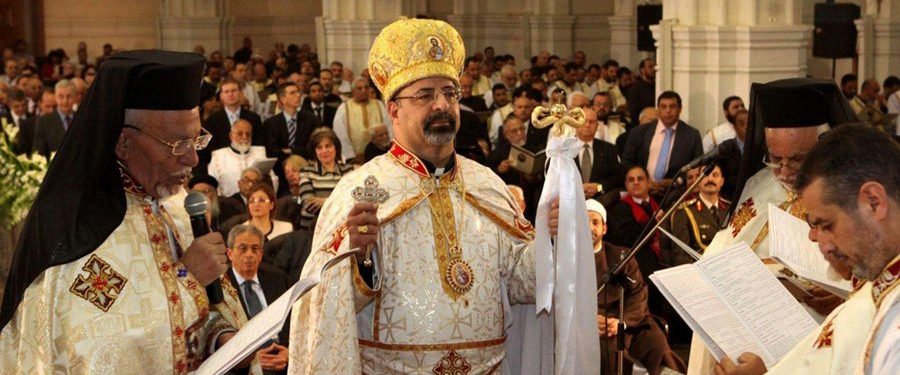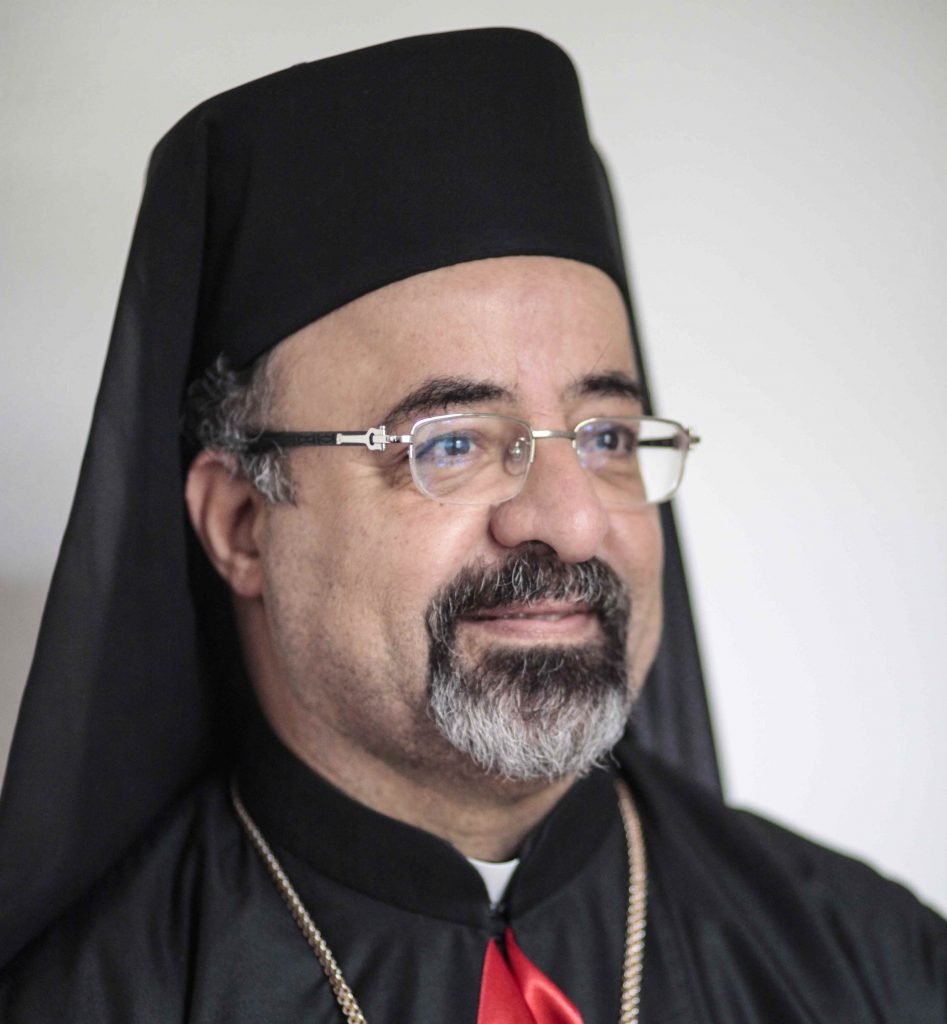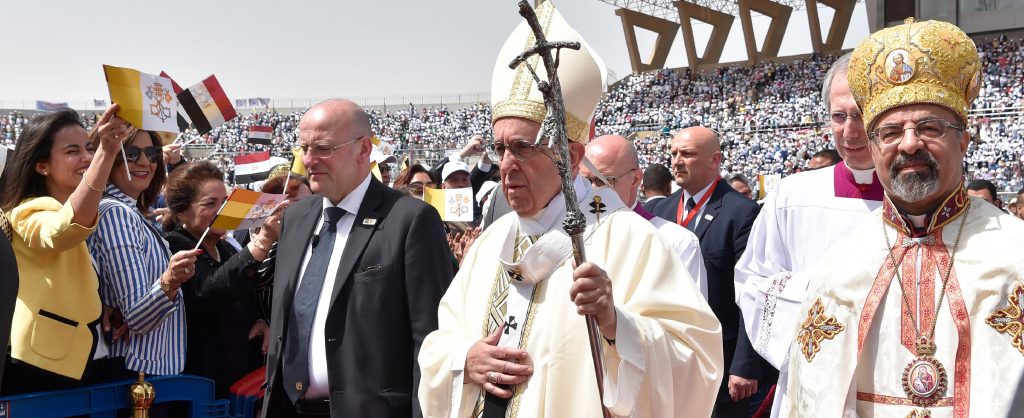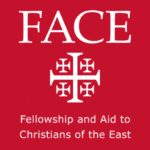Coptic Catholic Church

Nature: The Coptic Catholic Church is an Eastern Catholic church in full communion with the Bishop of Rome
Origin: The Early Church in Egypt was founded by St Mark the Evangelist who died a martyr in Alexandria in AD 68.
Rite: Alexandrian
Language: Coptic
Location: Egypt, small diaspora
Head: Patriarch Ibrahim Isaac Sidrak (born 1955, elected 2013)
Title: Patriarch of Alexandria of the Copts
Residence: Cairo, Egypt
Membership: 162,000
Origins of the Coptic Church
- Christianity originated in the ministry of Jesus, a Jewish teacher and healer who proclaimed the imminent kingdom of God and was crucified around AD 30–33 in Jerusalem in the Roman province of Judea.
- The apostles and the early disciples of Jesus Christ believed that Jesus was the Son of God made man; that he died for the forgiveness of sins; that he was raised from the dead in the Resurrection; that he was exalted by God in the Ascension to Heaven; that he would come again in glory to judge the living and the dead, and that his kingdom would have no end.
- In the 1st century, the earliest followers of Jesus were apocalyptic Jewish Christians, who formed a community in Jerusalem (the Jerusalem Church).
- Around AD 50, the Council of Jerusalem (the Apostolic Council), a conference of the Christians in Jerusalem, decreed that Christians did not have to observe the Mosaic Law of the Jews. The inclusion of gentiles ( i.e. non-Jewish believers) in the early Christian Church caused a schism between Judaism and Jewish Christianity, and thereafter Christianity emerged as a religion with its own character, growing apart from Judaism and Jewish Christianity.
- Jesus gave his disciples a mandate to preach the Gospel (the Good News) throughout the world. After the Council of Jerusalem, the apostles brought their missionary zeal beyond the shores of Judaea and around the Mediterranean region, preaching the Gospel.
- According to tradition, Christianity was brought to Egypt by the apostle, St Mark the Evangelist, who is said to have died a martyr in Alexandria in AD 68.
- In the 2nd and 3rd centuries, the Alexandrian School spread its influence across the Christian world.
- In AD 313, Emperor Constantine I issued the Edict of Milan legalizing Christian worship in the Roman Empire, of which Egypt was a part.
- In AD 325, the First Council of Nicaea supported the Trinitarian doctrine as expounded in the Nicene Creed, which holds that Jesus Christ was God and consubstantial with the Father, while the Council condemned Arianism which taught that Christ is distinct from and subordinate to God the Father.
- In AD 380, the Edict of Thessalonica officially adopted Trinitarian Christianity as the state religion of the Roman Empire, which included the province of Aegyptus (Egypt).
- In AD 381, the First Council of Constantinople confirmed the Nicene Creed (which is still upheld by the Catholic Church, Eastern Orthodox, Oriental Orthodoxy, Assyrian Church of the East, Ancient Church of the East and several Protestant churches).
- In the 4th century, monasteries sprung up all over the Egyptian desert inspired by the monastic movement organized by Saint Anthony the Great, Saint Paul of Thebes, Saint Macarius the Great and Saint Pachomius the Cenobite.
- In the 4th century, St Athanasius promulgated the doctrine of Mary as Mother of God, and fought the heresy of Arius which affirmed a finite nature of Christ rather than equal divinity with God the Father, and which was denounced by the early church.
- In AD 431, the Council of Ephesus confirmed the Nicene Creed, and condemned the teachings of Nestorius, Patriarch of Constantinople, who held that the Virgin Mary may be called the Christotokos, “Christ-bearer” but not the Theotokos, “God-bearer”. Saint Cyril of Alexandria defended the unity of Christ and the divine maternity of Mary.
- In AD 451 the Council of Chalcedon proclaimed two natures in Christ, full divinity and full humanity. The Coptic Church, professing Jesus Christ to be “One Nature—the Logos Incarnate” of the full humanity and full divinity, rejected the Council of Chalcedon.
- After the Council of Chalcedon, the Oriental Orthodox Churches, including the Coptic Church, separated from the rest of Christianity.
- The Church in Egypt, which had been Greek-speaking, gradually adopted the Coptic language for its life and liturgy.
- In the 7th century, Egypt was invaded and conquered by Muslim Arabs and gradually became a majority Muslim country.
- Throughout the Middle Ages, on account of their rejection of the Council of Chalcedon, the Copts tended to be looked upon as heretics by both the Church of Rome and the Church of Byzantium.
History of the Coptic Catholic Church
A formal union between the Catholic and Coptic Orthodox churches took place with the signing of the document Cantate Domino by a Coptic delegation at the Council of Florence on February 4, 1442. But, because this act was not supported in Egypt, it had no concrete results.
Catholic missionaries were first active among the Copts in the 17th century, with the Franciscans in the lead. A Capuchin mission was founded in Cairo in 1630, and in 1675 the Jesuits began missionary activity in Egypt. During the same century a number of lengthy but fruitless theological exchanges took place between Rome and the Coptic Church.
In 1741 a Coptic bishop in Jerusalem, Anba Athanasius, became a Catholic. Pope Benedict XIV appointed him Vicar Apostolic of the small community of Egyptian Coptic Catholics, which at that time numbered no more than 2,000. Although Athanasius eventually returned to the Coptic Orthodox Church, a line of Catholic Vicars Apostolic continued after him.
In 1824, under the mistaken impression that the Ottoman viceroy wished it to do so, the Holy See erected a Patriarchate for Coptic Catholics, but it existed only on paper. The Ottoman authorities permitted the Coptic Catholics to begin building their own churches only in 1829.
In 1895 Leo XIII re-established the Patriarchate and in 1899 he appointed Bishop Cyril Makarios as Patriarch Cyril II “ of Alexandria of the Copts.” As Patriarchal Vicar Bishop Cyril had presided over a Catholic Coptic synod in 1898 which introduced a number of Latin practices. He became embroiled in controversy, and was asked by the Holy See to resign in 1908. The office remained vacant until 1947, when a new Patriarch was finally elected.
The offices of the Patriarchate are located in Cairo, but the largest concentration of Coptic Catholics has always been in upper Egypt. In recent times there has been some migration to other parts of the country. The church now has seven dioceses, all of them in Egypt.
Most candidates for the priesthood are trained at St. Leo’s Patriarchal Seminary in Maadi, a suburb of Cairo. It was founded in 1953 and had 52 students in 2006. More than 100 Coptic Catholic parishes administer primary schools, and some have secondary schools as well. The church maintains a hospital in Assiut, a number of medical dispensaries and clinics, and several orphanages.
There are no Coptic Catholic monasteries to rival the Coptic Orthodox monastic tradition. However, in 2006 there was an Egyptian province of the Franciscans dependent on the Patriarchate (58 priests, 12 brothers, four novices and 27 seminarians), along with three female religious orders: the Egyptian Sisters of the Sacred Heart (62 professed, 12 novices and 40 postulants), the Coptic Sisters of Jesus and Mary (44 professed, six novices and one postulant), and an Egyptian province of the Little Sisters of Jesus (seven professed, one novice).
Like their Orthodox counterparts, Coptic Catholics have begun to emigrate to western countries in larger numbers in recent years. There are now 12 communities in various parts of the world, each of them served by a priest: two in Italy, one in France, one in the United Kingdom, two in Canada, three in the United States, two in Australia, and one in Kuwait. In addition, the Archbishop of Beirut serves as Ordinary for Coptic Catholics in Lebanon.
The extract, History of the Coptic Catholic Church, by Father Ronald Roberson CSP, is published by kind permission of the Pontifical Oriental Institute.

His Beatitude Ibrahim Isaac Sidrak
Patriarch of the Coptic Catholic Church
President of the Synod of the Coptic Catholic Church
President of the Assembly of the Catholic Hierarchy of Egypt
Patriarch of the Coptic Catholic Church
His Beatitude Ibrahim Isaac Sidrak was born on 19 August 1955 in Beni-Chokeir, Asyut Governorate. He studied philosophy and theology at St. Leo’s Patriarchal Seminary in Maadi (a suburb of Cairo) and was ordained a priest in 1980. For the following two years he served in the Parish of Archangel Michael in Cairo. He was sent to Rome to study at the Pontifical Gregorian University and received his doctorate in dogmatic theology. Between 1990 and 2001 he was the rector of the Patriarchal Seminary in Maadi. For a short period in 2002 he served as the parish priest of the patriarchal Cathedral of Our Lady of Egypt, in Cairo. In October 2002, he was elected Bishop of Minya, a post in which he served until his canonical election as patriarch.
Ibrahim Isaac Sidrak was elected as Coptic Catholic Patriarch of Alexandria by the synod of the Coptic Catholic Church on 15 January 2013, in succession of Patriarch Antonios I Naguib who had resigned because of poor health. Patriarch Sidrak asked for and received ecclesiastical communion from Pope Benedict XVI three days later, on 18 January 2013.
Ibrahim Isaac Sidrak often works closely with Pope Francis and the Coptic Orthodox Pope, Tawadros II, with the goal and aim of unifying the Coptic Orthodox and Coptic Catholic churches of Egypt.
Coptic Catholic Church in the UK
Our Lady and St Philip Neri (Mass on Saturdays)
208 Sydenham Road, Sydenham, London, SE26 5SE
Parish priest: Fr Romany Fathy Samaan Shenouda (Coptic Catholic)
Assistant parish priest: Fr Amgad Gerges (Roman Catholic).
Tel: 07760460212 / Tel: 07843941132

